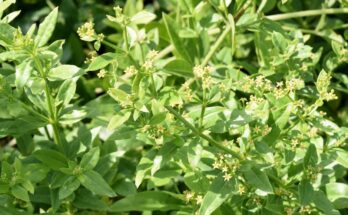The aubergine is a typically summer vegetable, which wears different colors depending on the variety it belongs to: purple, black but also white. Undisputed queen of this season’s cuisine, the aubergine is extremely versatile, excellent for the preparation of delicious and delicious dishes, also based on regional traditions.
Rich in beta-carotene, aubergines are a real concentrate of minerals, especially potassium, but also magnesium and calcium. It also contains several vitamins (A, B1, B2, B3, B5, B6, C, E and K), amino acids and a fair amount of folic acid and antioxidants.
Eggplants are really low-calorie: they contain just 18 calories per 100 g. Be careful when cooking, though: being quite spongy, they tend to absorb the sauce a lot, so avoid frying them. More generally, use a little oil even if you choose healthier cooking methods, such as frying or baking.
From appetizers, to first courses, second courses and side dishes, right up to desserts: aubergines are truly a wild card in the kitchen. Do not miss the famous aubergine parmigiana, but also the stuffed aubergines, the caponata, the pasta alla Norma with aubergines and salted ricotta, a typical Sicilian dish, the aubergines in oil and in vinegar.
Eggplant – what is it
The aubergine is a fleshy berry produced by the plant of the Solanum Melongena L. species, belonging to the Solanaceae family. The plant is an annual herbaceous with an erect, partially lignified stem, which can grow to a height of more than 1 metre.
It develops a tap root system but without going down more than 50/60 cm in depth, sufficiently expanded.
The eggplant is a vegetable that has become, over time, typical of the Mediterranean area. Its development is linked to particularly mild climatic conditions. The season for production is the summer one which runs from June to September. The product that does not come from protected crops is normally harvested in August.
When buying aubergines, make sure that the stalk (or peduncle) is still attached to the vegetable (in some varieties of aubergines the stalk is bright green, while in other varieties it is bronze-black) and not have dry parts.
If you are interested in the topic, discover our in-depth study on vegetables.
Eggplant: nutritional values
With its low caloric intake (only 18 calories per 100 grams of product) and its rich quantity of water, mineral salts, especially potassium, phosphorus and calcium, the aubergine is an excellent food.
The richness of vitamin C and many other antioxidants, especially chlorogenic acid and anthocyanins (responsible for the typical color of the skin of aubergines), make aubergine a vegetable very rich in properties.
The skin of the eggplant contains beneficial substances for the liver, pancreas and intestines, promoting the production and elimination of bile.
What do eggplants contain
This is what eggplant contains per 100 grams of product.
Eggplant: health benefits
The beneficial properties attributed to the aubergine by many scientific researches conducted would seem to be many more than you think.
Helps the cardiovascular system
Several studies show that the very substances that give the aubergine its typical bitter taste have important protective functions.
These are organic compounds that stimulate the production of bile by the liver, contributing, thanks also to the presence of fiber, to reduce the level of bad LDL cholesterol in the blood, the number one enemy of veins, arteries and the heart.
Furthermore, recent studies show how useful aubergines are for heart health thanks to their ability to fight:
- Inflammation.
- Oxidative stress.
- High levels of triglycerides in the blood.
Anthocyanins, powerful antioxidants, play an important role in safeguarding the cardiovascular system and help reduce blood pressure, with a consequent lower risk of strokes and heart attacks.
Thanks to its high potassium content, the aubergine also helps maintain a correct blood pressure value.
Antioxidant and anti-inflammatory activity
Chlorogenic acid is the main antioxidant compound found in eggplant. Its action, in addition to contributing to the reduction of the cholesterol level in the blood, helps in counteracting oxidation by free radicals.
Furthermore, chlorogenic acid would also seem useful for combating allergies by reducing their symptoms and effects.
Among the antioxidants of which the eggplant is particularly rich there are:
- Vitamin C
- Anthocyanins: vegetable pigments that are particularly concentrated in the surface layer of the product. Among these, nasunin is particularly effective in protecting cells from damage by lipid peroxidation and in counteracting inflammation and oxidative stress. It is used by the body to make iron assimilable and to expel heavy metals from the body, thus detoxifying the body.
Protects eyesight
The anthocyanins present in the vegetable have a protective effect on eyes and vision. Niacin has been shown to have protective properties against cataracts.
Purifying and remineralizing action
Given that the period of greatest availability of the product coincides with the summer months, the aubergine can help restore the mineral balance precisely in that period in which the high perspiration causes the loss of salts.
In fact, the good presence of potassium and other minerals gives it remineralizing and tonic properties. Due to its high water content, aubergines have rehydrating and purifying characteristics of the organism.
Intestinal ally
The good content of dietary fiber promotes regular intestinal transit and facilitates the digestive process. Furthermore, fiber stimulates the production of gastric juices which facilitate the absorption of nutrients in the intestine.
If consumed correctly, aubergines do not provide fat and have no cholesterol.
The abundance of fiber instead helps to increase the sense of satiety and makes this food suitable for all those who intend to lose weight.
Lower your blood sugar
The dietary fiber in eggplant helps regulate and maintain normal blood sugar levels. Fiber that is not digested by the body lowers blood sugar and reduces the body’s absorption of sugar. In this way, it prevents blood sugar spikes. This property has been attributed to the activity of polyphenols.
Bone health
Certain phenolic compounds have been linked to a reduction in osteoporosis symptoms and increased bone density. Added to this is the good content of iron and calcium which are essential for the health of the skeletal system.
Folic acid
The folic acid contained in aubergines is not among the most significant compared to that of other vegetables, but still makes them suitable for pregnant women.
Folic acid, also known as vitamin B9, is important for the prevention of spina bifida and encephalopathy of the newborn. This vitamin is also involved in the formation of red blood cells and in the metabolism of fats, proteins and carbohydrates. It also allows the correct use of vitamin B12.
How to cook eggplant
Alongside their nutritional qualities and low caloric intake, aubergines prove to be versatile in the kitchen, capable of accommodating savory and sweet, hot and cold dishes in the same way. A unique and precious ingredient during the summer season. But how to cook aubergines in a healthy, tasty but nutritious way? Yes, because not all cooking or preparation methods can keep the benefits of this vegetable intact.
- Surely one of the simplest, fastest and most effective ways is to cook aubergines in a pan. Sauté, cut into more or less long wedges, mushroom-shaped or cut round and grilled with EVO oil, salt, garlic and parsley. The grilled version of a truly delicious side dish and ideal for not losing the maximum of nutrients.
- In a pan it is also synonymous with “fried”, if you let the aubergines brown in hot oil, covered in a crunchy batter. A possibility, this, which, however, is not reconciled with a balanced diet.
- Even baked aubergines can be tasty and eclectic, lending themselves both to single cooking and to more or less abundant alternatives: with the addition of gratin, for example, or with a filling (veg or not) that transforms this vegetable into a dish unique complete and appetizing.
- The preparation methods also include the variant in oil (or in vinegar), capable of giving a “second life” to the aubergines through an intense preserve. Some prefer this option for dressing salads or appetizers, to be consumed in any season of the year.
But in addition to the cooking methods, there are many recipes that include aubergines as a staple or secondary food to complete a dish. From pasta to the classic parmigiana, through meatballs and more or less traditional accompaniments, discover the best Tipsforwomens recipes with aubergines.
The best recipes with eggplants
Perfect and suitable for low-calorie diets if, for example, it is grilled or boiled, but equally ideal as an ingredient for very tasty and high-calorie dishes. Its versatility and the variety available allow you to elaborate various preparations in the kitchen.
Aubergines go well with fish, for example with swordfish, they are an excellent base for an alternative pesto to the classic one with which to season pasta and they are also very tasty for savory pies,…




